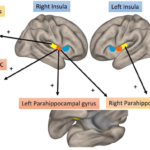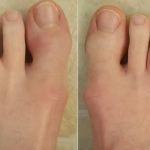These data are important in decision making on the treatment of PsA, recognizing the many comorbidities that put this population at risk. Further, as the landscape of agents to treat PsA changes, the effects of biologics directed at other cytokines (e.g., IL-17, IL-12/23, IL-23) need investigation. The same will be true of Janus kinase inhibitors with different patterns of Janus kinase enzyme inhibition.
10. Predicting Response
Abstract 2235: Zi et al.10
An important goal in the treatment of PsA, as is the case of other forms of inflammatory arthritis, is personalized medicine, also called precision medicine. In this treatment approach, biomarkers can hopefully allow the prediction of treatment response so that therapy can be prescribed more effectively and efficiently. These biomarkers can range in type although analysis of gene expression is currently popular and is an example of so-called big data approaches.
Better prediction of treatment response in PsA is important because between 30 and 40% of patients are primary non-responders to current agents; further, subsequent responses can diminish as successive agents are prescribed. Achieving treatment success with the first agent prescribed would be a significant advance.
In this study, Zi and colleagues obtained transcriptomic data at baseline to identify predictive markers for response to either TNF inhibitors or IL-17 inhibitors (IL-17A); for these studies, the investigators focused on CD8 positive cells in peripheral blood, analyzing these cells from 49 PsA patients starting either class of agent. Using this approach, the investigators identified differentially expressed genes for TNF and IL-17A inhibitor response, with further analyses indicating the pathways involved.
Pointing to genomic heterogeneity among PsA patients, these studies represent the first steps on the road to personalized medicine. To be clinically useful, these patterns of gene expression will likely need simplification, with the so-called interferon signature in SLE an example of reducing complex patterns of gene expression into a single score. (Of course, the interferon signature is not that simple and signatures would be better descriptor than a single score. Nevertheless, the existence of the signature pointed the way to a new therapy.)
11. Deep Cellular Immune Profiling
Abstract 1689: Eder et al.11
At present, the field of laboratory testing is expanding dramatically, with the application of various platforms to obtain new types of biomarkers that can be useful for screening, diagnosis, classification, prognosis and theragnosis (prediction of treatment responses). Along with the big data studies to characterize patterns of cell expression in disease, mass spectrometry by CyTOF can provide a detailed picture of immune cell phenotype and function in patients with PsA and other forms of inflammatory arthritis.


